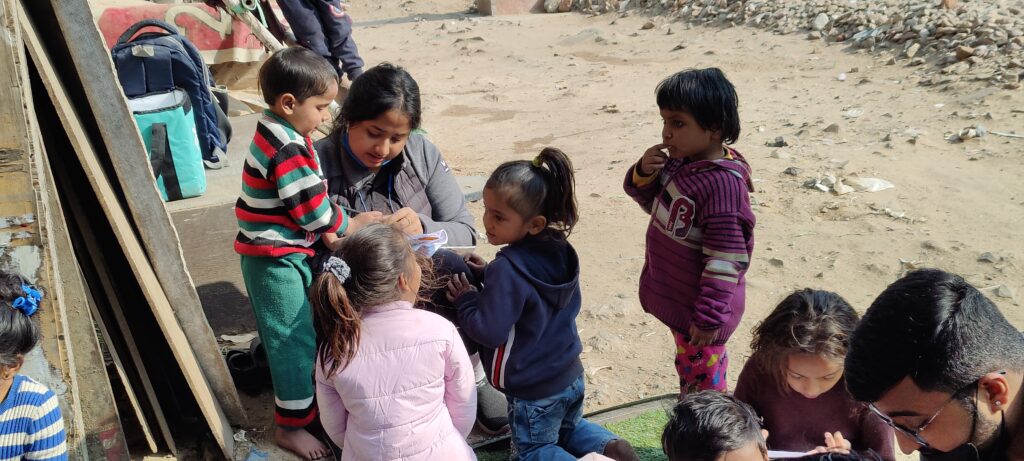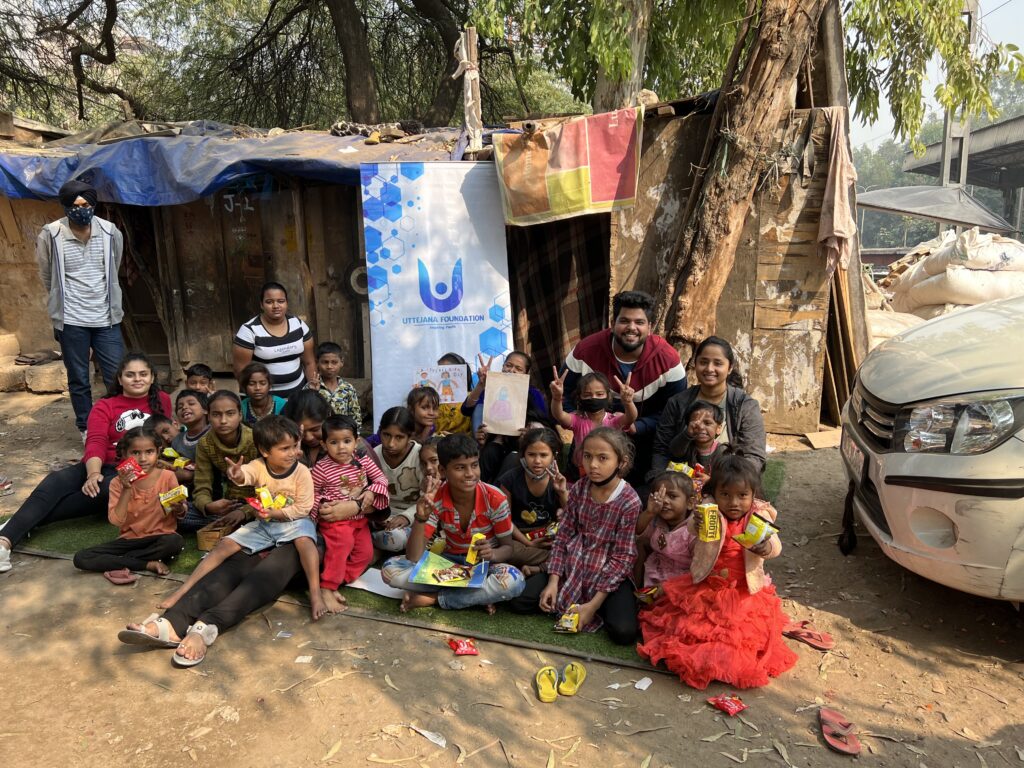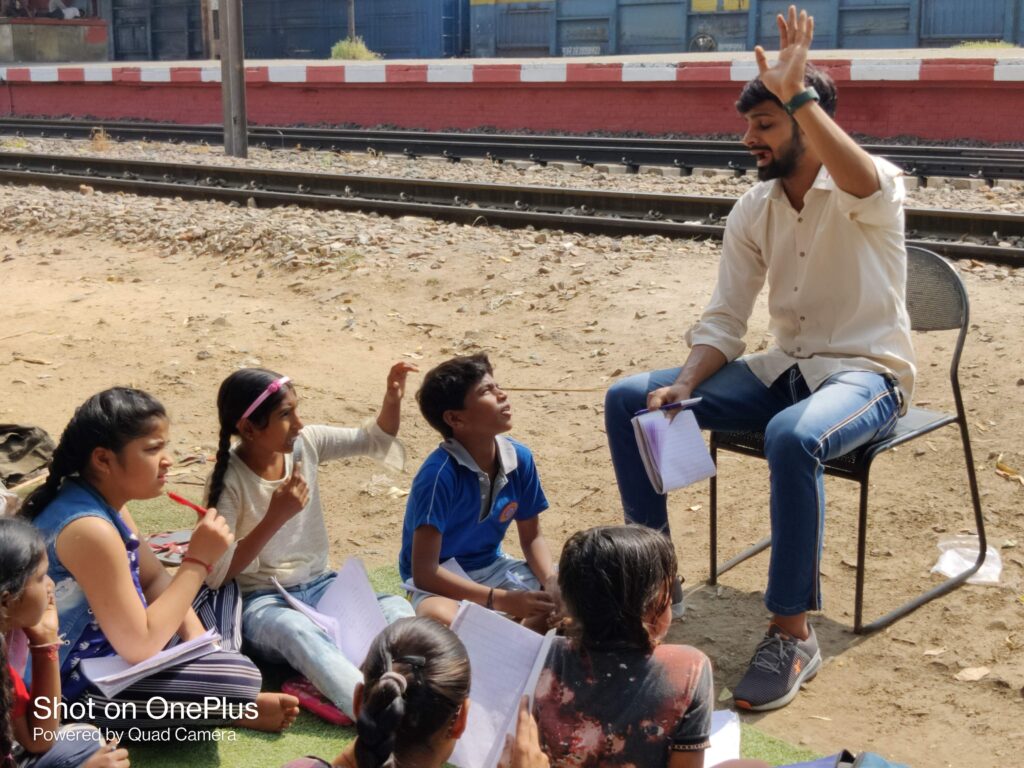
Education is the most powerful tool that can bring an enormous change in society and can enlighten and empower people. We all have seen massive changes in the education sector with the introduction of new policies by the government from time to time. Many laws were framed and many policies too were brought to promote free education in the slums of India. Various schemes are introduced to motivate children of slums, and rural areas to come to school. However, the main question that arises here is :
Is Every Individual able to reap the benefits of education available in India?
Everyone is talking about education in government schools and education in rural areas forgetting the slums completely. It’s a bitter truth that Slum children’s education in India remains a burning issue. Moreover, no one talks about that nor likes to mention this anywhere.
Even only a few organizations are seriously focussing on creating an impact and working in the educational sector. But the focus and attention that the educational sector or organization should receive are still lacking and that seriously matters a lot.
Slum Children In India

According to Census 2011, more than 8 million children under 6 years of age live in approximately 49,000 slums. Along with it, there are 22.72 million children (age group 5-18) living in urban slums who are out of school. Basically, the slum household comprises mainly migrant workers. These workers are mostly illiterate and less aware of the government schemes for education. They are also constantly moving, in search of new livelihood opportunities.
Therefore as these migrant children move with their parents they often lose out on age-appropriate educational opportunities. Often they engage in labor to escape poverty and support their parents. They are never empowered to study or focus on their education.
We all know the basic importance of childhood care, balanced nutrition, education, and health. However in a place where there is a struggle for two square meals and even for clean and safe drinking water. The education of children will always take a backseat.
The State Of Education In Slums

Even after the introduction of The Right to Education Act, 2009 it’s been a decade and there are still millions of children who are out of school in India. Most of these children live in urban slums and remote rural areas. The situation there is so much backward that the parents can see their children idle and even picking rags or doing small jobs. But there is no initiative from their end.
Everybody there in these slums wants their children to study but only a few take the initiative to send them to school. Even Many NGOs take the initiative in coming and teaching these children. But only a few succeeded in bringing a change. Although the NGOs are playing a crucial role in reaching these slums and working on the development of these peoples.
There is a higher proportion of girls children which is 3.23% that are out of school than that of boys which are 2.77%. Girls living in the slum areas and rural areas are mainly out of school as they get engaged in domestic work. They do not go to school as they get involved in house chores and taking care of their siblings. Boys drop out of school to add to the household incomes. Lack of empowerment, awareness, healthcare facilities, absence of toilets in schools, and lack of proper nutrition also lead to an increase in drop-out rates.
Project Chanakaya – An initiative for free education in slums of India
We have initiated Project Chanakaya with the aim to enlighten and empower slums with education. Since January 2019 we have been working in the slum situated in Kirti Nagar. so far we have been able to reach around 200+ students there. we started with only a handful of students and slowly gained momentum. We have successfully established an open weekend classroom.
Where our volunteers interact and entertain the children there with various learning activities. we have received an enormous response from the children as well as their parents too. The parents initially didn’t focus on the education of their children. They even didn’t know in which standard their child is in, what he/she is learning.
It’s an open classroom so anyone is allowed to come and have a seat and learn. even sometimes the parents too come and sit and enjoy the basic education that we are presenting to the children. The people there have started understanding the importance of education.
We have also provided personal one-on-one tuition to some of the best minds. The children loved that thing and showed us immense joy in learning from them.
We are now supporting them in getting their child back to school. As we also aim to reduce the dropout rates in the slum children. so far we have received a good result in that area and are focusing on moving forward with a smile to bring an impact and provide free education in the slums of India.
